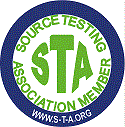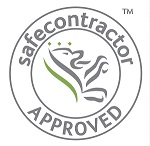EMSAS - Safety & Environmental Consultants
Head office contact
EMSAS Ltd.
safety & environmental consultants
Bridge House, Severn Bridge
Bewdley, Worcestershire DY12 1AB
T: 0845 094 0485
F: 0845 094 0486
safety & environmental consultants
Bridge House, Severn Bridge
Bewdley, Worcestershire DY12 1AB
T: 0845 094 0485
F: 0845 094 0486
We have consultants based around the UK.


DIRECTORY OF OCCUPATIONAL HYGIENE CONSULTANTS - please click on the BOHS logo to view our entry
Noise & Vibration
Noise & Vibration
Enquire About This Service Today
-
WORKPLACE NOISEApproximately 17,000 people in the UK suffer deafness, ringing in the ears and other ear conditions caused by excessive noise at work and over 1 million employees are exposed to levels of noise that puts their hearing at risk (3). The Control of Noise at Work Regulations came into force in Great Britain on 6 April 2006 with the aim of ensuring that workers' hearing is protected from excessive noise in their place of work.
We assist our Clients in complying with the above regulations, thereby protecting worker safety, by undertaking workplace noise assessments using the highest quality Type 1 integrating sound level meters and personal noise dosimeters. Surveys are undertaken in accordance with relevant HSE guidance (Controlling Noise at Work L108). Workplace noise levels, including high range peak levels (>140dBC) are identified, workplace noise plans are compiled and calculations of a daily/weekly personal noise exposure levels are undertaken. Hearing protection provided by employers for employees is assessed for suitability and advice given on alternative types where required. Advice is also provided on relevant health surveillance requirements along with guidance on proven noise reduction measures to limit the risk of noise exposure at source.
(3) Source - HSE website 19/01/11 (http://www.hse.gov.uk/noise/index.htm.) -
AUDIOMETRYTo comply with the Noise at Work Regulations 2006 employers must provide health surveillance (hearing checks also known as audiometric testing) for all their employees who are likely to be regularly exposed to noise above the upper exposure action values or they are at risk for any reason (e.g. they are particularly sensitive to hearing damage or they already suffer from hearing loss). Such hearing checks provide warnings of early signs of hearing loss, help check that control measures (e.g. hearing protection) are working and importantly give employers an opportunity to prevent hearing damage from worsening. Ideally, checks are started before being exposed to noise (e.g. at commencement of employment) to give a baseline however they can be introduced at any time and are followed by regular checks thereafter.
Audiometric testing is undertaken to HSE guidance note MS26 and assessments include aural related medical questionnaires, otoscopic examinations and individual puretone screening. Reports include, on an individual level, audiograms, frequencies and threshold limits, HSE recommended categorisation of hearing ability and referral to an audiologist (where applicable). Help protect your workforce from permanent work related hearing damage and contact us for more information. -
ENVIRONMENTAL NOISEPlanning Policy Guidance 24: Planning and Noise (PPG 24) advises that Local Planning Authorities should consider noise in relation to the control of development. This document outlines the considerations to be taken into account in determining planning applications for noise-sensitive developments and for those activities that will generate noise. The Guidance document introduces the concept of noise exposure categories (NEC’s) for residential development, encourages their use and recommends appropriate levels for exposure to different sources of noise.
The criteria for quantifying the impact of an industrial noise source close to residential properties is assessed through the methodology detailed in BS 4142. This British Standard describes a method of determining the level of noise of an industrial nature together with procedures for assessing whether the noise in question is likely to give rise to complaints from persons living in the vicinity. The margin by which noise levels exceed background noise will determine the likelihood of complaints. Where it is shown that complaints are likely, a detailed noise mitigation strategy is provided to assist the Client reduce site noise and the likelihood of receiving complaints.
Noise from construction sites can be limited through the application of established best working practices, selection of quieter plant or equipment and mitigation measures as detailed in BS 5228: Code of practice for noise and vibration control on construction and open sites. Consultants will liaise on the Clients behalf, with relevant bodies to address factors which are likely to affect the acceptability of construction noise e.g. Site location, relative to the noise sensitive premises; Existing ambient noise levels; Duration of specific site operations; Hours of work; and the characteristics of the noise produced. -
HAND ARM VIBRATIONEmployees in many different industries and occupations are exposed to Hand Arm Vibration (HAV). Exposure can be as a result of operating hand held power tools, hand guided machinery or hand fed machinery and affects workers in many occupations including heavy industry, gardeners, construction, demolition and maintenance to mention only a few. Where there is significant exposure i.e. prolonged and regular exposure to HAV there is a potential for serious and permanent damage to the nerves and or vascular system of the hand and arms where this is not adequately controlled. This can in extreme cases lead to disability if not controlled.
HAV exposure of employees can be eliminated in certain instances, but where this is not possible it can normally be controlled. Therefore the risks to health can be eliminated or reduced. The Control of Vibration at Work Regulations requires an employer to assess the risks posed by work practices to employees and to eliminate or reduce the risk. These regulations also set out daily exposure levels and limit values for exposure to HAV.
With HAV data provided by manufacturers only being a guide to what an employee actually experiences, it is much more appropriate to conduct assessments with measured data. We have undertaken HAV measurements of a wide range of tools and activities through a variety of occupations to establish personal daily exposure levels. With this information and with an assessment of working patterns we can produce significantly more accurate assessments of exposure than by relying on manufacturers’ data alone. By producing reports written to be understood we have worked with our Clients with the common goal of eliminating or reducing personal HAV exposure. -
WHOLE BODY VIBRATIONWhole Body Vibration (WBV) exposure can lead to musculoskeletal problems, mainly back pain. This is primarily as a result of driving vehicles over uneven ground or poor surfaces which generally results in jolts. However drivers in warehouses and factories where the floors are not even or the drivers adopt poor driving techniques a problem can also exist. In order to establish the level of WBV we can measure and calculate the exposure levels in order to assess compliance with the exposure and limit values presented in the Control of Vibration at Work regulations.
